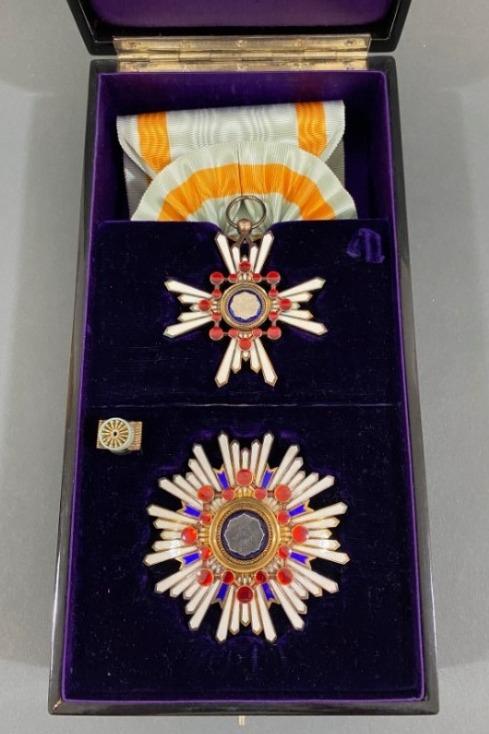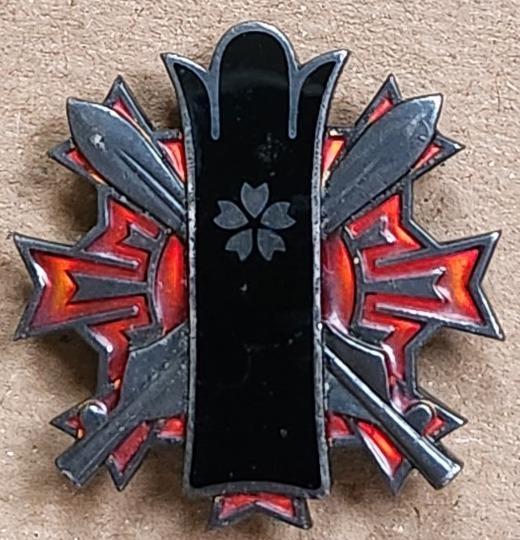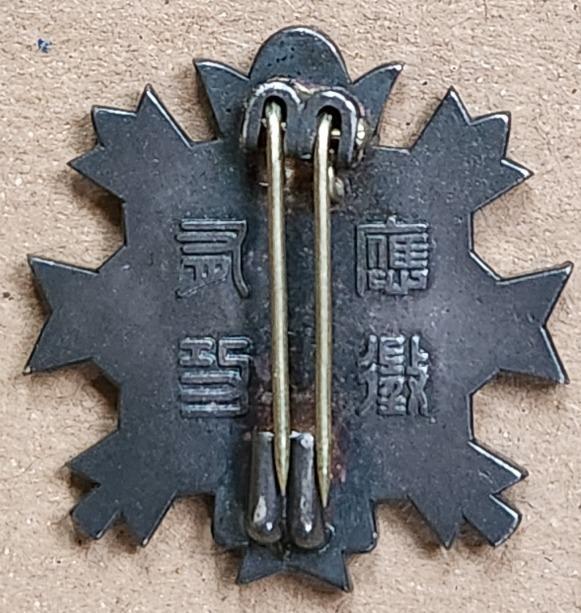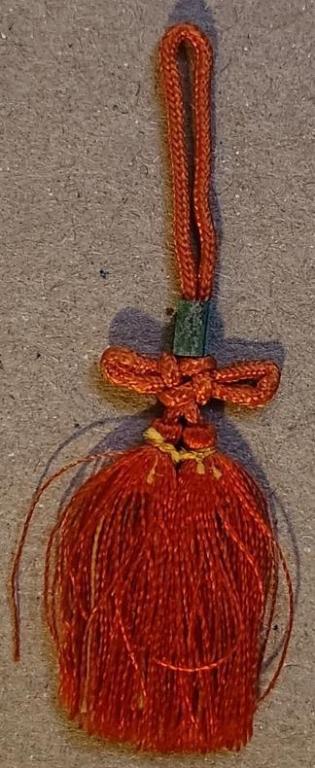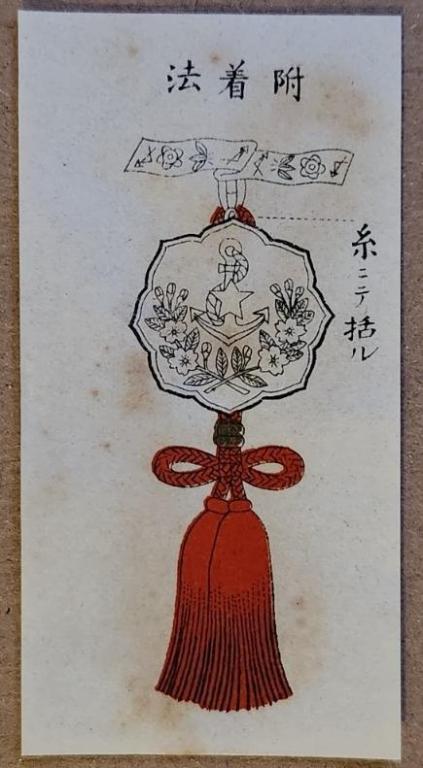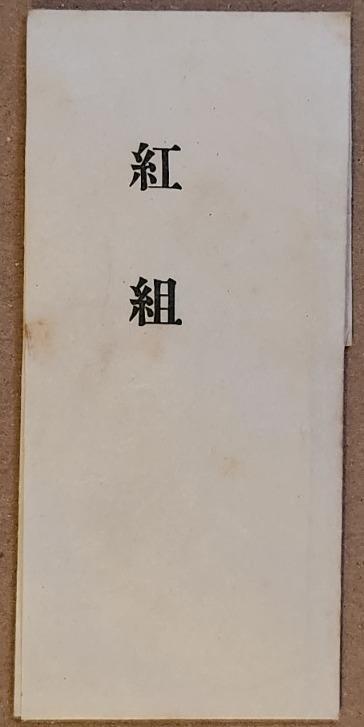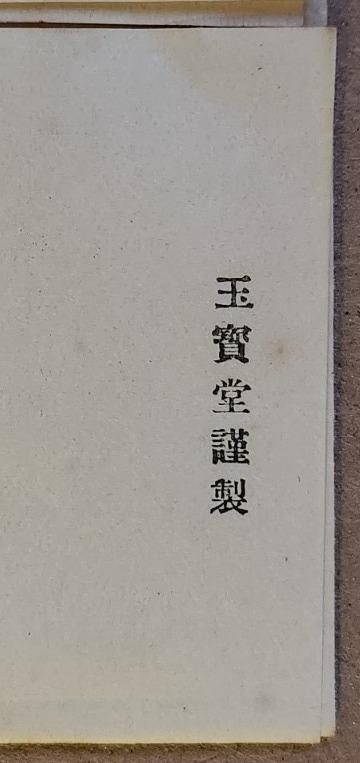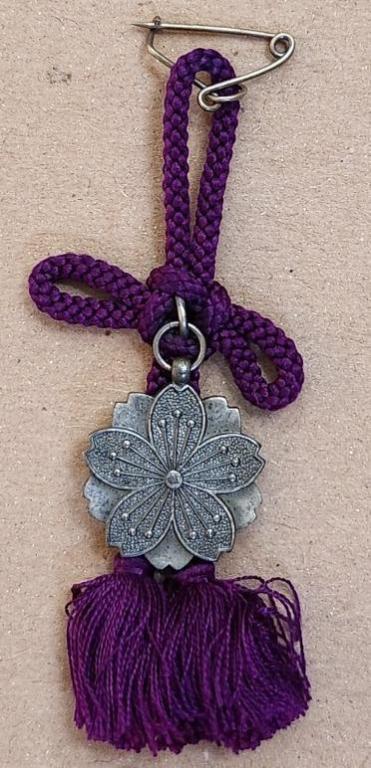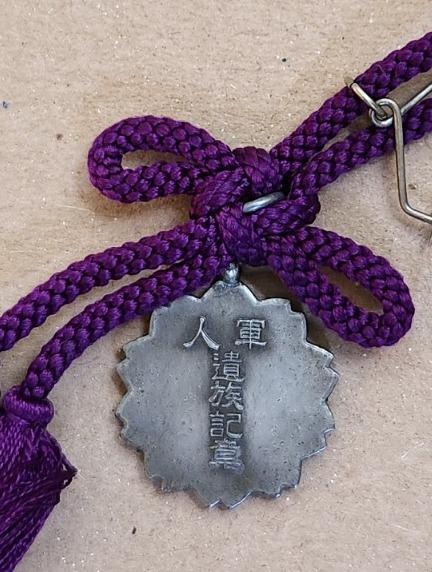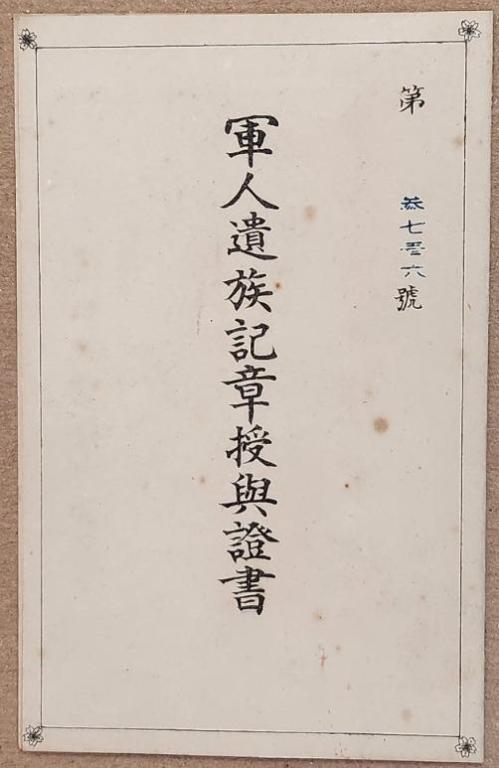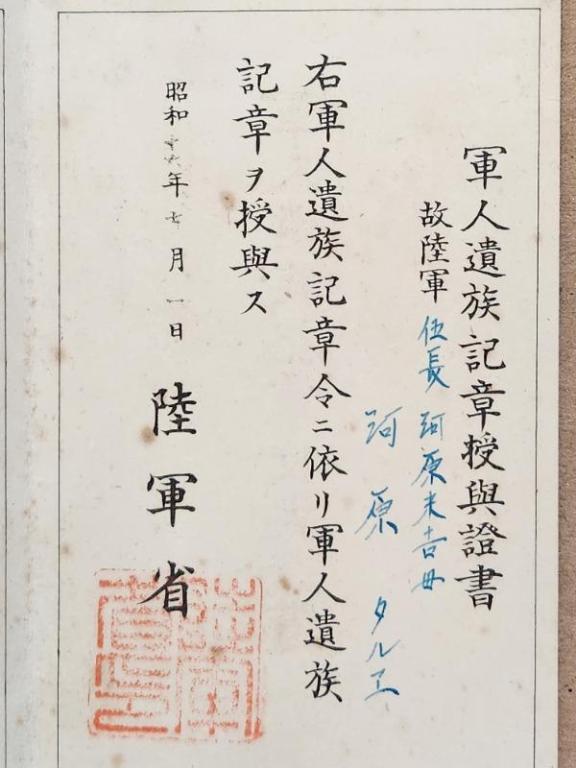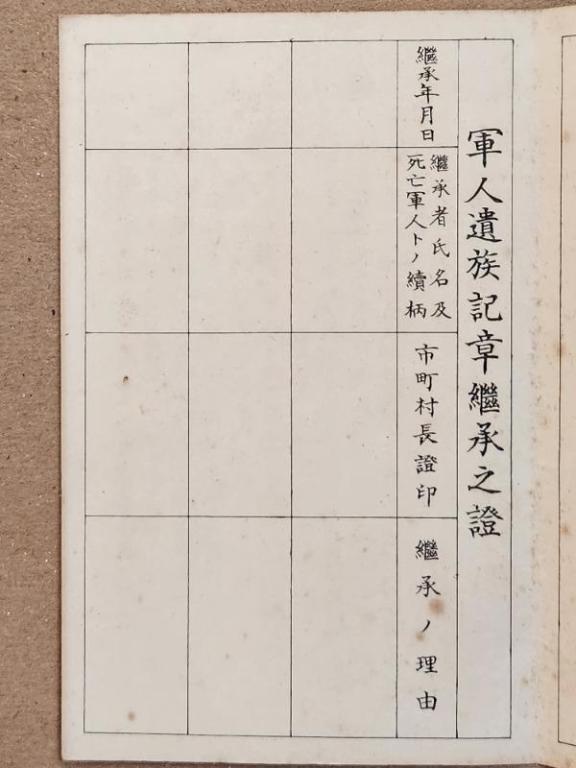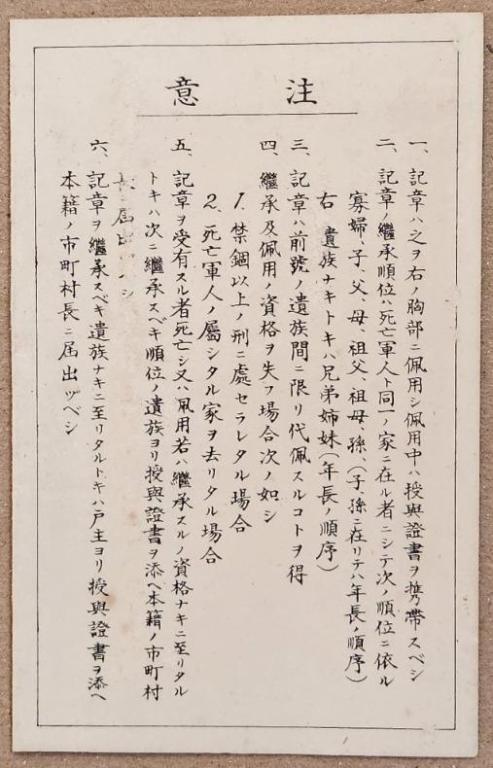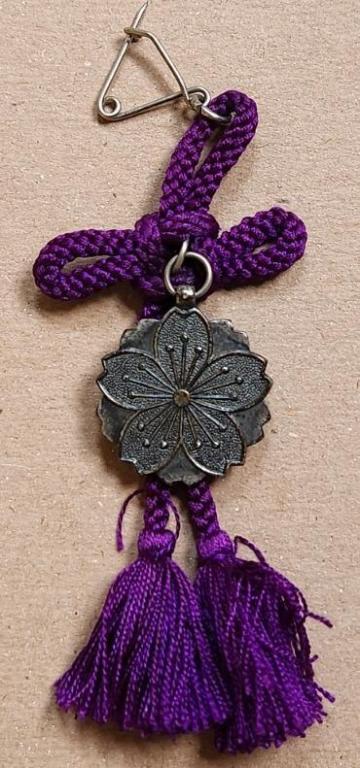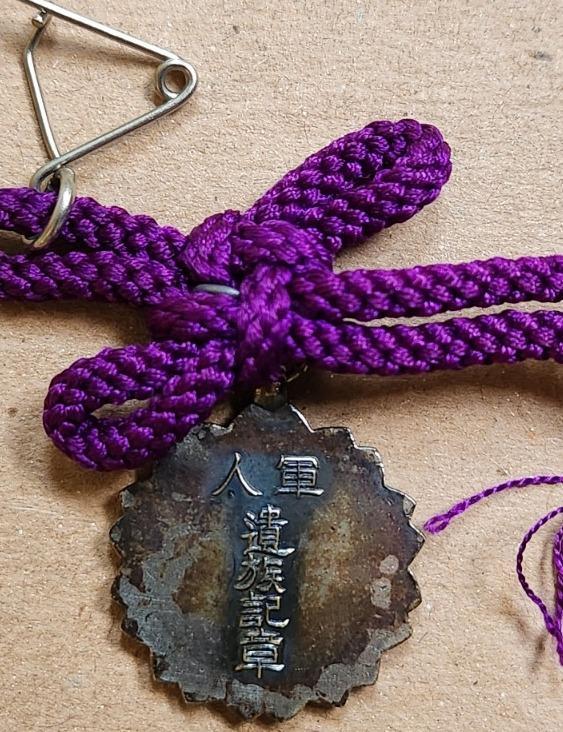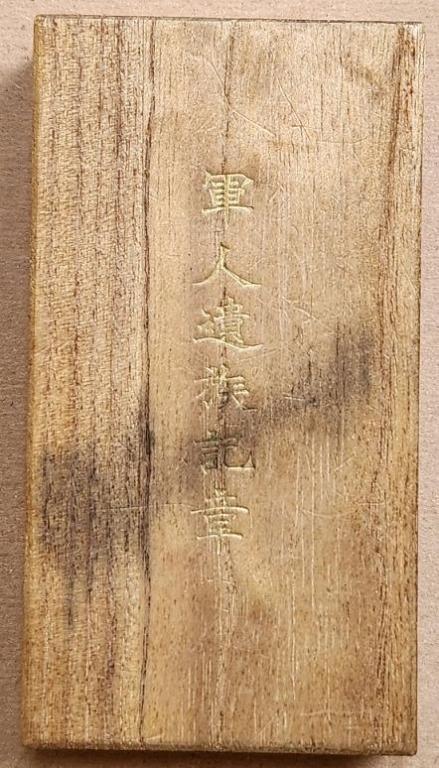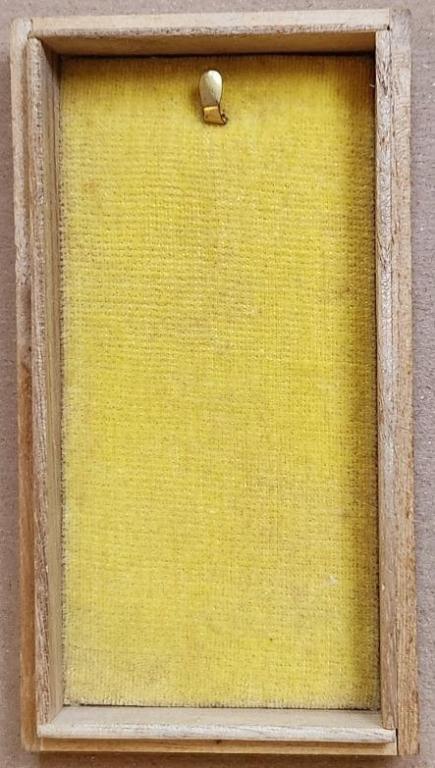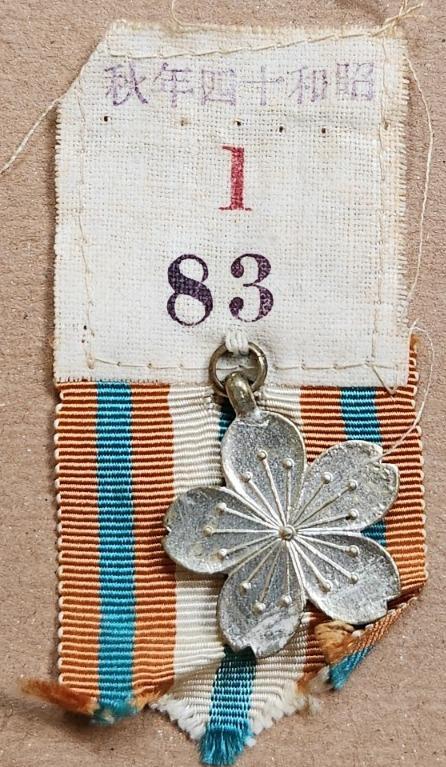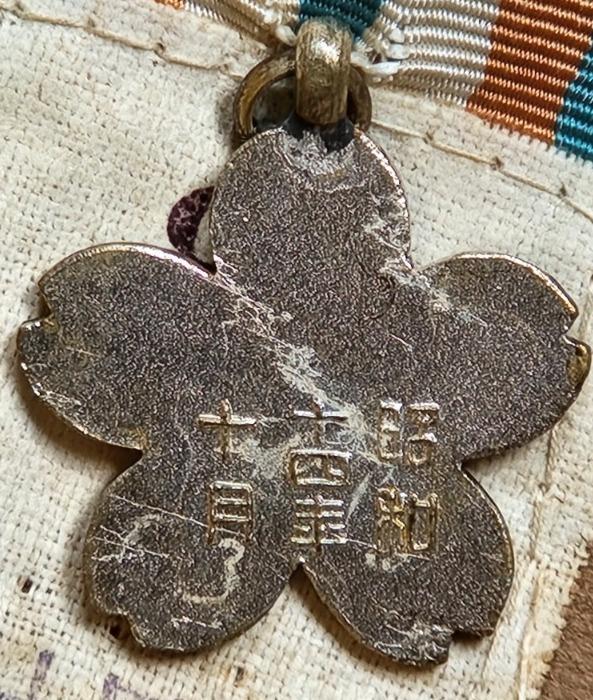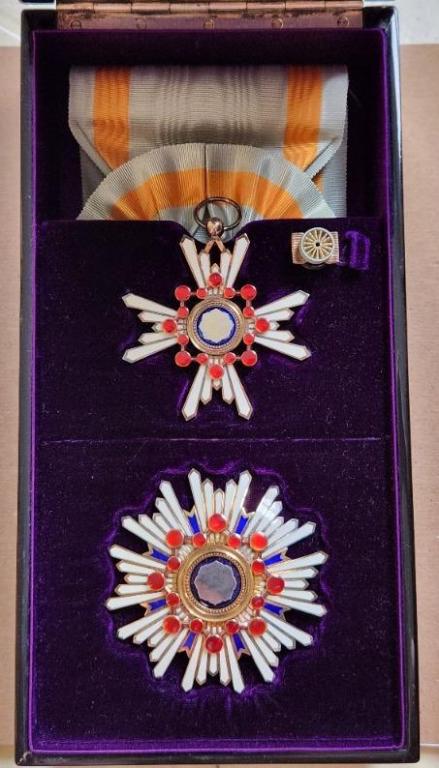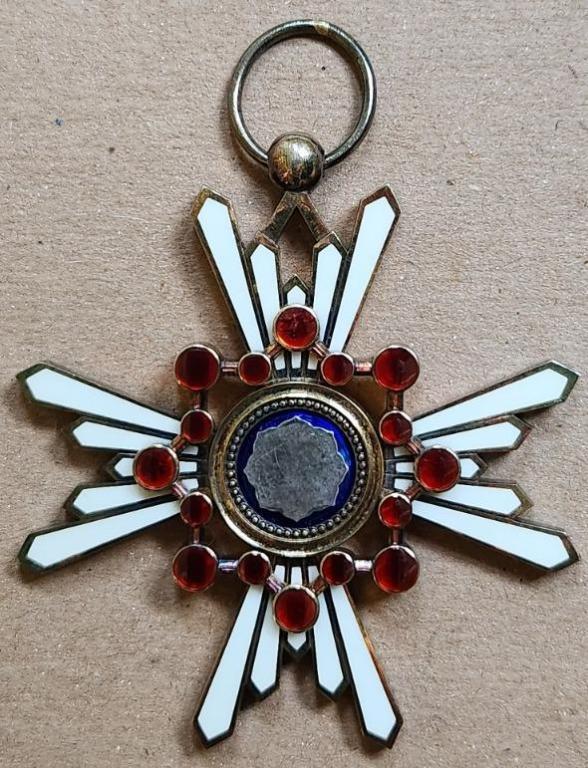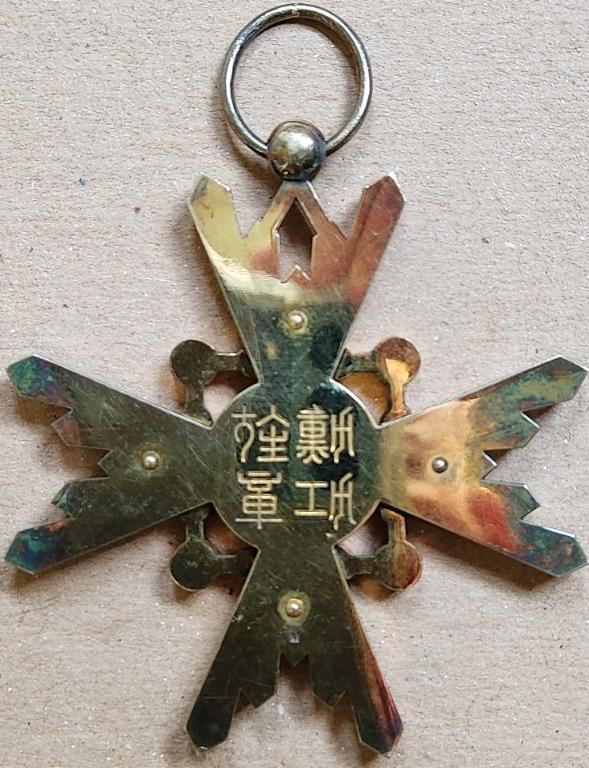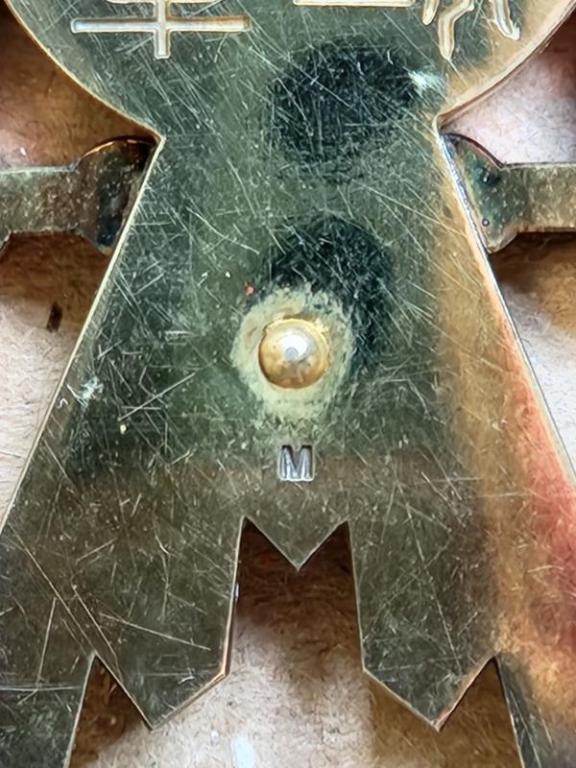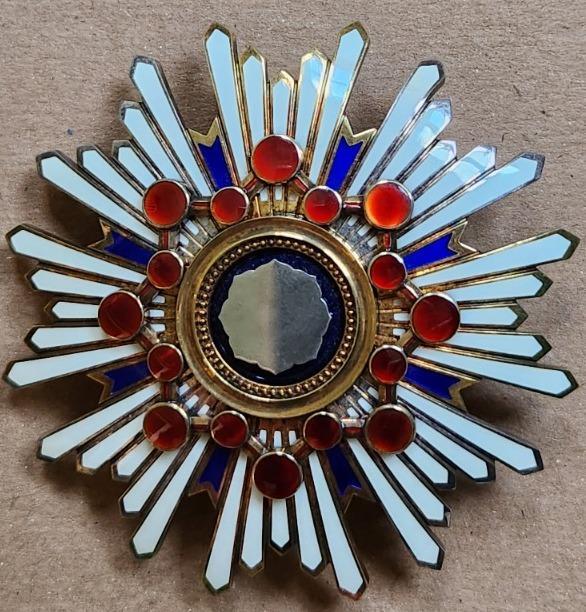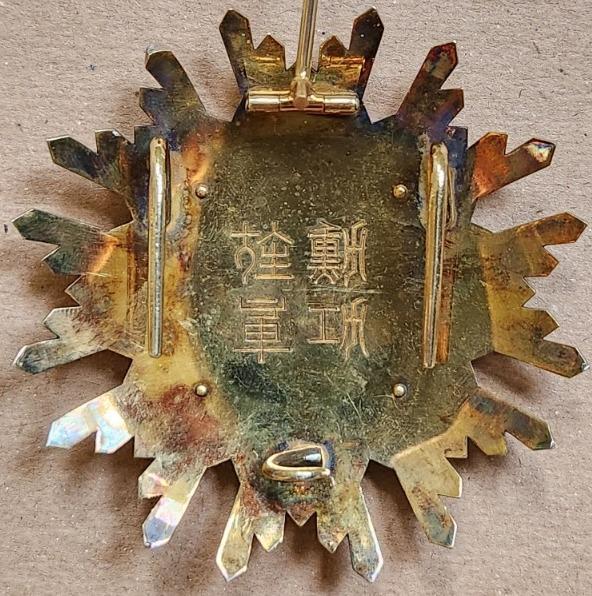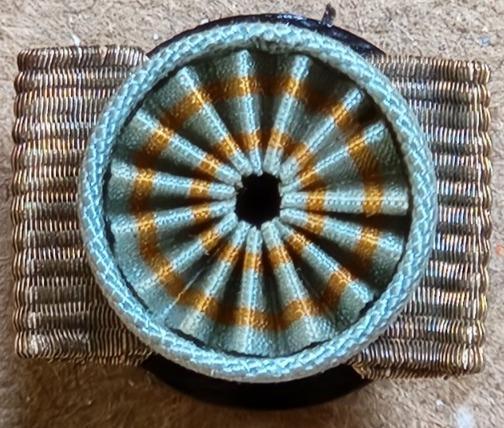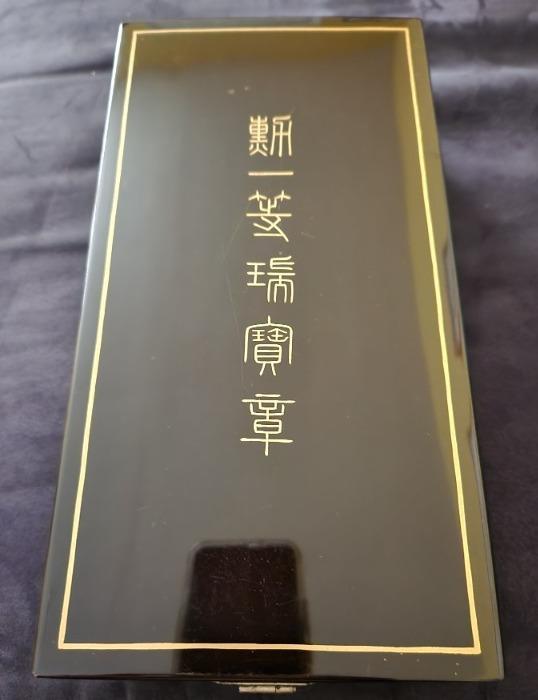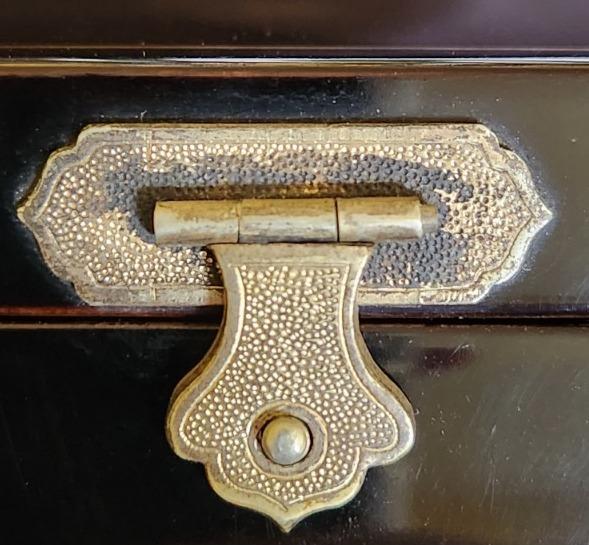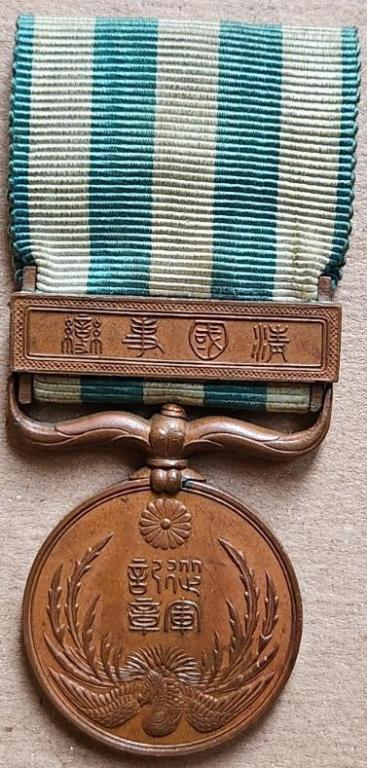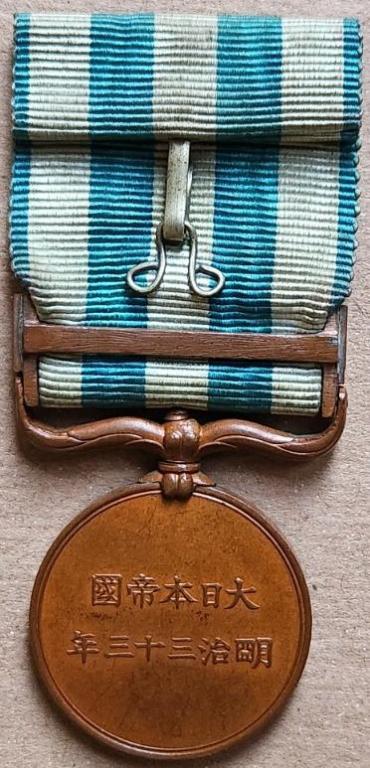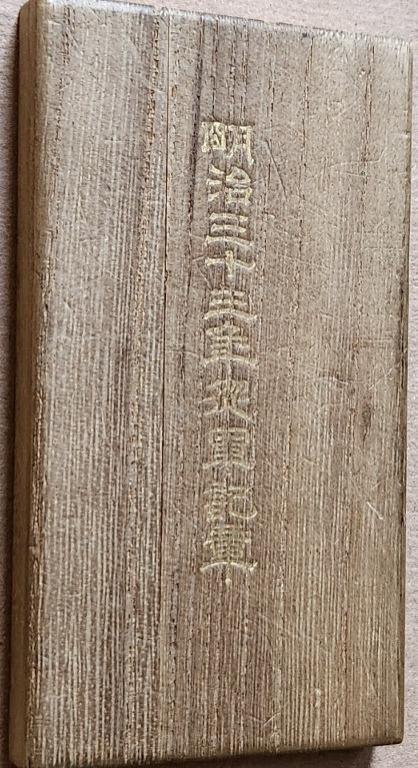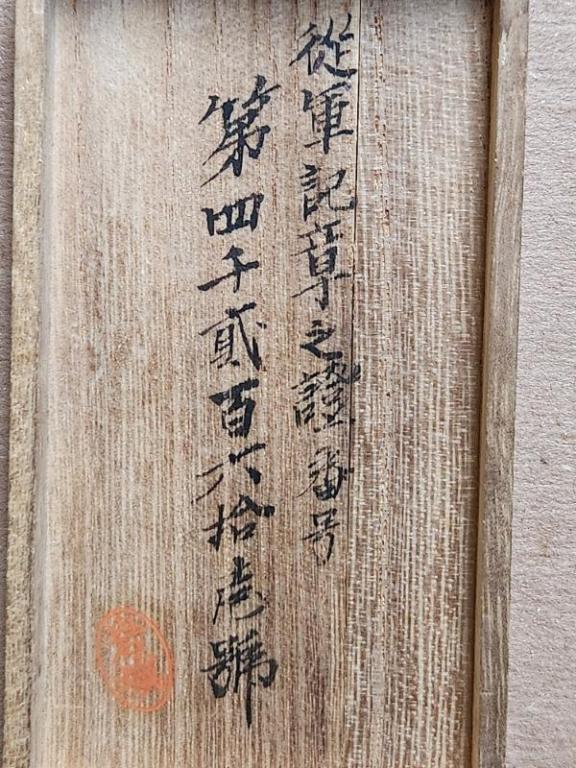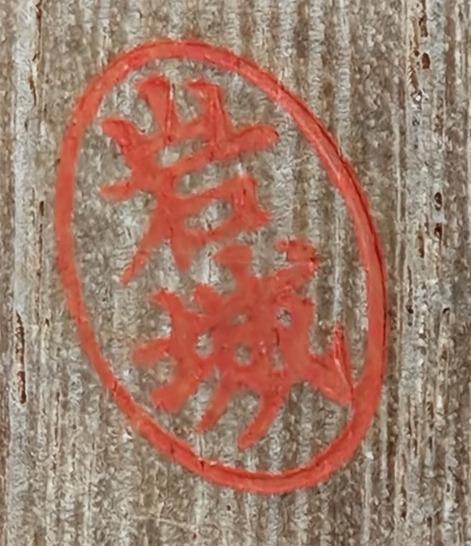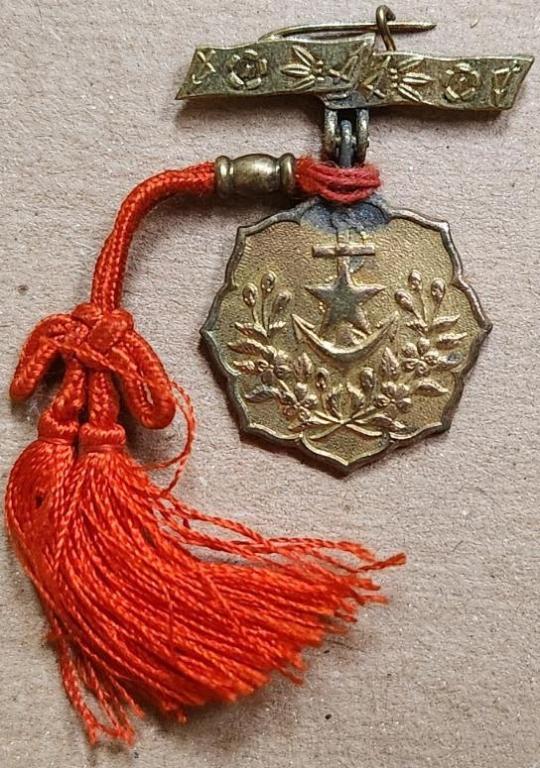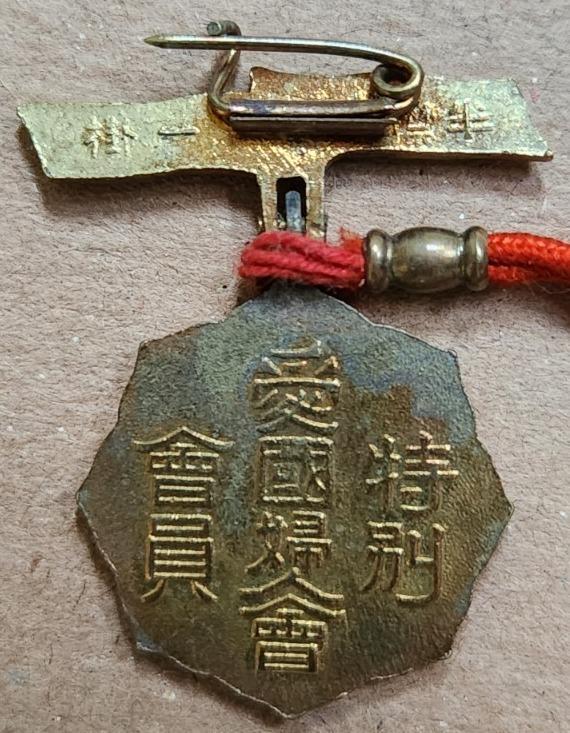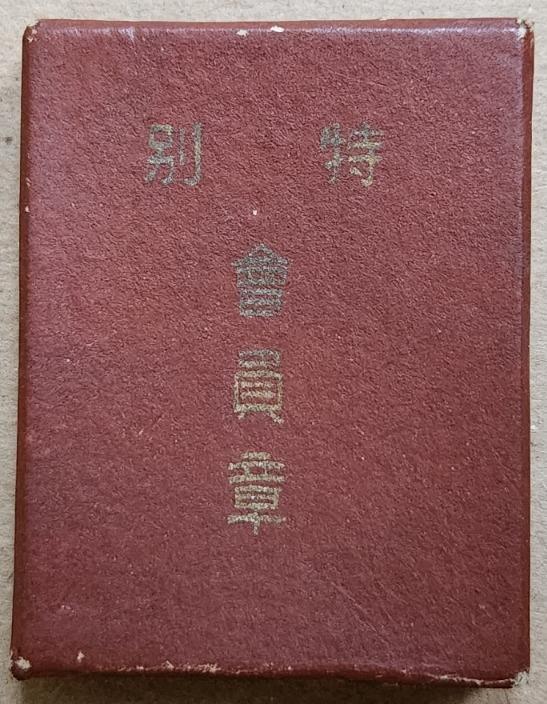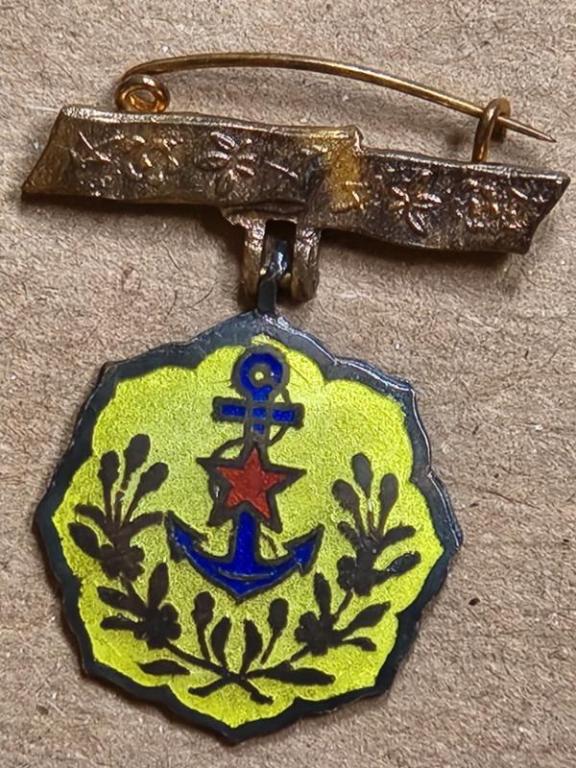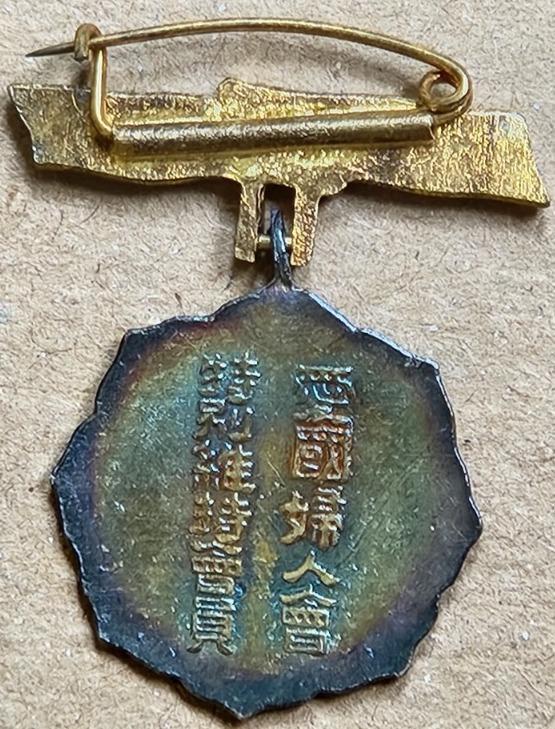-
Posts
468 -
Joined
-
Last visited
-
Days Won
20
Content Type
Profiles
Forums
Blogs
Gallery
Events
Store
Everything posted by TracA
-
Regarding the Military Bereaved Family Badge Award Document above in my post from September 24th, I’ve been working on the translation of the second page. I’ve been rendered tremendous assistance by No One, especially with the translation of the second column, and could not have arrived where I am now without that key assistance. I feel that I have to make some corrections to the translations in my post from September 24th. The translations were taken from the old Dai Nippon KIA Badges webpage and I do not take questioning/changing any of Rich Catalano’s translations lightly, but I feel it necessary to do so in this instance. I am not claiming that my translations are definitive, but I like to think that they are of value. Any and all corrections are of course welcome. All the best, Tracy Military Bereaved Family Badge Award Document second page: The title is 軍人遺族記章繼承之證 for “Proof of conferment/inheritance of the Military Bereaved Family Badge”. The first column is 繼承年月日 for “Date of conferment/inheritance”. The second column is 繼承者氏名及 for “Name of the person who inherits and” 死亡軍人トノ續柄 for “family relation to the deceased soldier”. The third column is 市町村長證印 for “Stamp/Seal of Municipality/Town/Village Leader/Mayor”. The fourth column is as above in No One’s post of October 9th: 繼承ノ理由 for “Reason/Cause for conferment/inheritance”. Recall from the September 24th post above that the first page (inside of the cover) of the award document has a date on it, and per the old Dai Nippon KIA Badges webpage that is the date that the badge was issued. I assume that the date referred to in the second column of the second page would be handwritten, and therefore something like the actual date that the family member physically received the badge, the date that it was physically conferred on the family member.
-
Greetings, I was lucky to obtain this wonderful badge at auction, although the auction house grossly misidentified it. I am certain that my badge is the one pictured by Gordon Craig in his September 12, 2023 post on this forum in the Wound Badge Evolution thread (https://gmic.co.uk/topic/52144-wound-badge-evolution/page/25/#comments). His posting in that thread was solely a result of the auction house’s misidentification. We do trust these institutions to be accurate but alas, sometimes they are far from it. Go to JapanX’s wonderful Medals of Asia website to learn much about this badge and the Requisitioned Worker Badge and patch. See https://asiamedals.info/threads/requisitioned-workers-badges-and-patches.23938/. Also see Nick Komiya’s thread on the War Relics Forum at https://www.warrelics.eu/forum/japanese-militaria/insignia-badges-requisitioned-workers-war-critical-industries-768981/. The badge is 30mm x 30mm and the obverse is silver with black enameling and what looks to me to be red glass cabochon. In the foreground is a black enameled shield with a silver cherry blossom just above the center. The outline of the shield is silver. Two silver crossed swords are behind the shield and behind the entire design is a red rising sun with silver outlines. I believe that the red is not enameling, but rather red glass cabochon. The reverse is smooth and silver with the exception of a four stylized kanji inscription. The fastener on the reverse is of a double pin construction. The pins on the reverse are hinged with a pin and they fit under two 7mm pieces of metal that are roundly bent down slightly on both sides. The pins and the hinge pin are gold color. Question: as it is a merit badge I assume that it would have come in a lacquered case. Has anyone seen an example of a case? It is a powerful looking badge, and attractive. All the best, Tracy Obverse: On the reverse on the right top to bottom is 應徵 for “Requisitioned” and on the left top to bottom is 有功 for “Merit”.
-
(1).thumb.jpg.38cff8cd9c5d55311a4208b0a83448ba.jpg)
A pair of medals that are not expected.
TracA replied to No one's topic in Non Military Collectibles & Antiques
No One, Very interesting. I note in Rich Catalano’s The Imperial Ordinances for War and Commemorative Medals of Japan and Manchukuo he states the award criteria on p. 18 and there is the following sentence: “[t]hose who performed a special service at the front [emphasis added] as well as those who were in the Army or Navy who were elsewhere performing military functions”. Perhaps if one were a war correspondent and the Japanese government felt that his reporting was beneficial and of service to Japan’s cause, he could be awarded the medal. In fact, in his article on The Evolution of Imperial Japan’s War Medals (War Relics Forum, p.6: https://www.warrelics.eu/forum/japanese-militaria/evolution-imperial-japana-s-war-medals-1875-1945-a-610821-6/) Nick Komiya explicitly states in his post from 03-21-2017, 03:26 PM that military observers and war correspondents could be awarded the medal while implying that some of the as many as 500 awards of the medal to foreigners were such. What a storied pair of medals to own. All the best, Tracy -
It’s been a while since I’ve posted in this thread. I have recently acquired a Red Cord that is not affixed to a badge, and the cord came not only with the instructions but also the paper packet holder. For those of you new to this thread and interested in more information, please see JapanX’s wonderful Medals of Asia website at https://asiamedals.info/threads/history-and-badges-of-greater-japan-womens-patriotic-association.23765/ and https://asiamedals.info/forums/greater-japan-womens-patriotic-association.663/. If I am not mistaken, then the meaning behind the red, white, and purple cords is as of this time unknown. Tracy Note that the red cord is actually brighter in color than my picture below, but my cell phone camera and the poor lighting failed to bring the true color out: Instructional sheet for the red cord. I have to correct a post that I made above, on February 18 of this year. In that post I completely mistranslated the three kanji at the top of the instructional sheet. They are 法着附 for what I believe translates to “method for wearing the attachment (cord)”. On the right and downward is 糸ニテ括ル. This clearly specifies where on the badge the cord is to be placed, as indicated by the fact that there is a dotted line from the top of the first kanji to the point at which the cord is attached to the badge. I think that a very rough translation could be “rule for fastening the string [cord] at….” Finally, the paper packet folded up around the red cord and the instructions. On the front of the paper packet is 紅組 for “Red Group”: On the back of the paper packet is 玉寶堂謹製 for “Respectfully made by Gyokuho [workshop]:
-
Farkas, Nice to see more additions from your wonderful collection. All the best, Tracy
-
No One, Ahhh, thank you. On and off all day I thought about how to make the translation smooth or smoother in English using the word "inherit". "Conferment" does the trick. Thank you again for helping me to make my documentation as complete and accurate as possible. All the best, Tracy
-
Dear No One, Thank you, as always, for the correction and edification. I will need to redo my documentation, especially the translation of the second page of the Award Document. Thank you again! Tracy
-
Greetings, I have obtained another boxed Military Bereaved Family Badge, but this one came with two Yasukuni Shrine Enshrinement Badges. In addition, I have the Bereaved Family Badge award document as well as the Yasukuni Enshrinement ceremony invitation and the envelope in which it came. The number on the enshrinement badges matches the number on the invitation envelope. All of the items were neatly and carefully packed into an Imperial Gift Foundation Imperial Soldier’s Relief Association lacquered box. I will add posts in stages, as I work through the award document, invitation, and envelope. As my guide I have used the old Dai Nippon KIA Badges webpage via the Wayback Machine (referenced above) as well as Michael J. Martin’s book entitled Japanese Military and Civilian Award Documents 1868 - 1945 (Atglen, PA: Schiffer Publishing Ltd., 2016). The seller of the items also contributed, but I always try my best to use the wonders of the Internet in order to verify and hopefully add the kanji to my cataloging write-up. It really is fascinating to have all of these “pieces” together and ostensibly for the same deceased individual and his mother. I hope that you enjoy and as always, please add your corrections and additions. Tracy Obverse of this particular Military Bereaved Family Badge, a simple yet aesthetically pleasing design: The reverse, plain with the exception of the name of the badge: The award document for the badge. This is the cover, and the central column is 軍人遺族記章授與證書 for “Military Bereaved Family Badge Certificate of Conferment/Record of Issue”. 第號, for “number”, are printed on the cover but the number itself is handwritten in blue ink. I believe that it is 参七三二六 for “37326”; or perhaps it could be “37226”, as the long horizontal line between the two sets of two shorter lines could possibly be a way of separating 二 and 二. I am purely speculating here. I note that 参 is document kanji for 3. This is the first page on the inside of the cover. The first column on the right is as above. The next column is “deceased/late” and the branch of service in printed, black kanji. Here it is 故陸軍 for “deceased/late army” and in handwritten blue ink is what I believe to be 伍長河原末吉毋 for “Corporal Kawahara Suekichi, mother” and the next column in handwritten blue ink is what I believe to be 河原タルヱ for “Kawahara Taruwe”. Altogether the three columns could be read as “Military Bereaved Family Badge record of issue for deceased army corporal Kawahara Suekichi, to his mother Kawahara Taruwe”. The next two columns are translated by Martin as “A bereaved family badge is conferred to the person stated to the right in accordance with the Soldiers’ Bereaved Family Badge ordinance” (Martin, p. 161). The sixth column begins with the date. Of course the kanji for the era (Showa), year, month, and day are printed in black with the actual numbers handwritten in black ink. We have 昭和十六年七月一日 for “Showa 16 [1941] July 1st”. The old Dai Nippon KIA Badges webpage notes that this is the date that the badge was issued and not the servicemember’s date of death. After the date is 陸軍省 for “Ministry of the Army” and the red seal is, I would believe, the seal of the Army Ministry. This is the second page. According to the old Dai Nippon KIA Badges webpage it is rarely filled out. It has a title and then four columns. All translations are taken from this webpage. The title is 軍人遺族記章繼承之證 for “Military Bereaved Family Badge, record of [the] departed” and the four columns are (from top to bottom): “Date of Death”; “Name and Rank of Departed”; “Stamp of City/Town/Village Headmaster”; “Cause of Death”. Question: it appears as if 繼承 is translated as “departed” or “deceased” but I cannot for the life of me verify that. What am I missing here? The back page of the award document. This describes the order of precedence for which family member receives the Military Bereaved Family Badge. Per the old Dai Nippon KIA Badges webpage the order is “...widow, children, father, mother, grandfather, grandmother, etc.” Obviously there would be an order of precedence among the surviving children. You may also wish to consult Murphy, Paul L. and Steven L. Ackley. In the Name of a Living God…, p. 1.
-
Wonderful collection. Thanks for sharing. Tracy
-
No One, As always, thank you for the clarifications. All the best, Tracy
-
Greetings, I have finally obtained a boxed KIA Badge, more literally translated as a Military Bereaved Family Badge. My badge came with a single Yasukuni Shrine Soldier Enshrinement Badge with ribbon. I have no idea if the Enshrinement Badge, for attendance in the applicable ceremony, was given to the family member who was the actual recipient of the KIA Badge that I have obtained, or if the two were separate and simply combined at some point in the past. I would assume that the latter is more likely. A brief description of who qualified for the badge, how it was obtained, who the approving authority was, and who presented it can be found in Murphy and Ackley’s In the Name of a Living God. The non-government badges and medals of Imperial Japan, including Police, Fire Brigade, Red Cross, Veteran, and Patriotic Groups. (San Ramon, CA: Falcon Books, 2005). You may also wish to consult Rich Catalano’s old Dai Nippon website archived via the Wayback Machine, found at https://web.archive.org/web/20200204141015/http://www.imperialjapanmedalsandbadges.com/kia.html and https://web.archive.org/web/20200225125252/http://imperialjapanmedalsandbadges.com/yasukuni.html. The old Dai Nippon website notes “The Yasukuni badge was not given as an award. It was given to the bereaved family members at the enshrinement ceremonies and served as an ID just for the events. These ceremonies were held twice a year (spring and autumn).” I’m going to appropriate the brief description of the KIA Badge, with additions, from Murphy and Ackley: the medal is a dark silver color, approximately 25.4mm in diameter, and in the shape of a cherry blossom. The obverse is a stylized cherry blossom with a pebbled background and it is superimposed on a plain cherry blossom shape, with the ends of each offset. The reverse of the badge is plain except for the name of the badge, written in a row of two kanji with the remaining four kanji in a column below the center. The badge is attached to a tasseled purple cord tied in a bow, the length of which from the top of the cord to the ends of the tassels is between 76.2mm and 101.6mm. The top of the tassel loops through a ring that is attached to a safety pin assembly. The wooden box is approximately 120.65mm long by 63.5mm wide, the lid of which has the name of the badge in gilt kanji. The interior of the box is a yellow velour at the top of which protrudes a small brass hook. Since the medalbed is not fitted, the badge's safety pin “rests” on the brass hook and this is what holds the badge in place inside the box. Regarding the Yasukuni Shrine Soldier Enshrinement Badge with ribbon, not mentioned in Murphy and Ackley, that I have in my possession: the bright silvery badge is thin and of light weight. Made of aluminum? It is approximately 25mm wide. The obverse reproduces the stylized cherry blossom of the KIA badge (minus the pebbled background and one shape superimposed on another) and the reverse is plain except for the month and year of the particular enshrinement ceremony for which the badge is applicable. I note that on my example and the examples on the old Dai Nippon website the kanji for the year and month are either (1) in two (or three) rows on the bottom of the badge with regnal year and month from right to left or (2) in two columns roughly down the center of the badge with regnal year in the right column and the month in the left column. There may be other configurations. The badge is affixed to a colored ribbon stitched to a thin, coarse looking white cloth with stitching around its perimeter. On my example the ribbon consists of a central 14mm white stripe with a 3mm blue stripe running down the center. On either side of the white stripe are 11mm copper brown stripes each with a 3mm blue stripe down the center. Total width and length of my example is 35mm x 70mm. On the top of the white cloth on my example is the regnal year from right to left followed by the season corresponding to the particular enshrinement ceremony for which the badge is applicable. On the old Dai Nippon website there are examples with the kanji from left to right. Below the kanji, on my example, is the number 1 in bold red and below that is the number 83 in bold black. All but two examples (a third possible example is unclear) on the old Dai Nippon website conform to this pattern, albeit with different numbers. The two “counterexamples" are attributed on the website to either “an earlier version or perhaps very late war” or the year 1944. On the old Dai Nippon website, where they are dated to pre-1940, are examples of the badge in gilt with a rising sun emblem in the center. However, not all pre-1940 badges have such a design. There is also an example of a ribbon without the date on the white cloth. Generally the ribbon color pattern is specific to the ceremony for that year and season/month, and is changed for the following ceremony, which is changed again for the next ceremony, etc., etc. However, on the War Relics Forum thread (see below) it was noted that the 1940 badges for both ceremonies had the same color ribbon in, what I assume to be, the same pattern. What is the meaning of the color pattern on the ribbon and the numbers in red and black? Using the only three sources that I could currently find, the old Dai Nippon websites (referenced above) and a 2020 thread from the War Relics Forum (https://www.warrelics.eu/forum/japanese-militaria/yasukuni-badges-776793/), does not result in a consensus explanation. The red and black numbers are either (1) a key to finding the deceased’s name and hometown in the Yasukuni Shrine record books or (2) seating/group arrangements for the ceremony and/or perhaps the festivities afterwards. The ribbon color pattern functions as (1) a signification of seating arrangements or (2) color coding for crowd control or (3) a color coded security system used to identify who was permitted at a particular ceremony or (4) perhaps a combination of these functions. I would like to point out that on the old Dai Nippon Yasukuni Enshrinement Badge page either a single badge and ribbon is depicted or two badges and ribbons with matching red and black numbers are depicted. There are no pictures of three or more badges and ribbons with matching red and black numbers. Evidence that the ceremonies were limited to two attending family members? Any and all correcting or corroborating information, as well as additional information, is welcome. If you have it, then please consider replying. I find the Military Bereaved Family Badge appealing in its relative simplicity, and I find the enshrinement badge fascinating in its practicality. All the best, Tracy Obverse of the Military Bereaved Family Badge: Reverse, with the inscription 人軍遺族記章 for Military Bereaved Family Badge: Box lid with the badge name in gilt kanji: Box bed with the protruding brass hook: Yasukuni Shrine Soldier Enshrinement Badge with ribbon obverse. The kanji are 秋年四十和昭 for Showa 14 (1939), Autumn. Badge reverse with 十月年四十和昭 for Showa 14 (1939), October.
-
Hi Nick, It is the same breast star and I took the photo; the photo was not taken by the seller. This situation is most bizarre. In the photo we can see an outline of the M but under 25x magnification I cannot find even the hint of an outline when examining the star. A mystery of sorts. All the best, Tracy
-
Nick, Thank you, as always, for the information. That M on the breast star us pretty freaky. I've just spent about 15 minutes examining the star with a 25x magnifying glass from all different angles and I cannot for the life of me see the M or even a faint outline of an M. Nonetheless, when I look at your repost of my photo, and when I enlarge my original photo, there the M clearly is. Very strange indeed. Thanks. Tracy No One, As always, thank you for the kanji lesson. This is an important part of my learning and my documentation. Thanks. Tracy
-
I was finally able to add this magnificent Order of the Sacred Treasure Grand Cordon to my collection. The badge has the M mint mark of the Osaka mint, thereby dating this badge from 1930 to 1943. See Medals of Asia at https://asiamedals.info/threads/mark-m-on-japanese-orders-and-medals-who-and-when.14818/. Part of me expected to also find an M mint mark on the breast star, but the star has no marks whatsoever. Note that the lacquered case has a gold border on the lid, which if I am not mistaken puts it at least in the same or similar “age group” as the badge. Two Questions: If the badge has an M mint mark is it common that the breast star not have one? Part of me expected that if the “set” were manufactured at the Japan Mint, then both the badge and breast star would have the M mark if one of them had the M mark. However, I have no evidence upon which to base my expectation. Are there any known time coordinates for cases with the gold border, or a border at all? I know that the Medals of Asia website has a picture of a Grand Cordon case from 1943 with silver kanji and silver border. It truly is a beautiful set. As usual, my cell phone camera and poor lighting set-up wreak havoc on the colors. Tracy In the case: Badge obverse: Badge reverse: M mint mark up close: Breast star obverse: Breast star reverse: The sash. I’m not sure what the official color is, but it looks powder blue to me. The rosette is the same color as the sash: Case lid: Finally, a close-up of the case clasp:
-
At first that's what I thought, but when I couldn't find reference to that manufacturer at Medals of Asia (https://asiamedals.info/#japan.459) and after No One helped me translate the kanji, I then figured that the stamp was that of the certifying official. Tracy No One, You read my mind. I was having much difficulty transcribing that last kanji as I could only find it as two separate characters and not a single character. Thank you, as always. Tracy
-
Dear No One, Thank you so much for your assistance. Although I was able to figure out that 貮 and 拾 are document kanji for numbers, I failed to realize, among other things, that 壱 is also. Regarding the red stamped surname Iwaki, I assume that is the surname of the official (?) who actually certified that this was medal No. 4261. Thank you again. All the best, Tracy
-
Greetings, I thought that I would add to this wonderful and informative post started by No One and contributed to by JapanX. Below is my recently obtained 1900 War Medal/Boxer Rebellion Medal. To me what makes this example special is the handwritten kanji and clearly what appears to be a stamped red circle with two kanji inside, all on the underside of the lid. As usual I struggle with the kanji transcription and interpretation. So, I’ll have questions to go along with the picture of the underside of the lid. Thank you. Tracy Obverse: Reverse: Box lid with the gilt inscription 明治三十三年従軍記章 for “Meiji Year 33 War Medal”. 1900 was the 33rd year of Meiji: Underside of the lid. The right column is 従軍記章え?番号. I cannot figure out what the sixth kanji is or what it and the fifth could mean together. I believe that the other kanji translate to “War medal…number”. The left column is 第四十貮百六拾?師. I believe that the first eight kanji translate to “Number 4260”. I cannot figure out what the eighth kanji is but I have an inkling that it and the ninth kanji might be a surname. Perhaps 若師, Wakashi? Close-up of the two kanji inside a circle, all stamped in red: I believe that the first kanji is 岩 and the second kanji is possibly, maybe 岸 for a combined 岩岸, meaning Iwakishi? Could this be a manufacturer’s stamp? Maybe a place name, perhaps the city of Iwaki in Fukushima prefecture, a place where the recipient was issued the medal?
-
Wait, I'm confused. Doesn't the "R" on the reverse stand for "Real"? Tracy
-
No One, Thank you very much for the information, pictures, and links. It is greatly appreciated. All the best, Tracy
-
Another WPA badge has come into my possession. This is a Special Member Badge. I’ve posted one previously in this thread, but this new one is a bit different. This one has a red cord attached between the badge and the suspension bar. The pin on the reverse of the suspension bar is different from the one on the Special Member Badge posted above. The pin on the reverse of this suspension bar is of one piece such that the left end is in the form of a hook and the right end is bent in the shape of two circles such that the rest of the pin comes across and can be placed under the hook. On the reverse of the suspension bar is a small diameter tube attached to the middle second and third part of the bar and through which the pin is “threaded”. Therefore the inscription on the reverse of the suspension bar has 掛ー to the left of the pin tube and 襟半 to the right of the pin tube. 掛ー襟半 for "hanging collar half". For hanging on the kimono half-collar. Thank you JapanX for that bit of information. Instead of a wooden box this badge came in a red cardboard box with a blue cardboard insert to hold the badge. The red color is a paper that is affixed to the lid and its sides as well as the bottom sides. It does not fully cover the inside of the lid or the bottom of the box. The badge name is on the cover of the box in gilt: 別特会員章 for “Special Member Badge”. Tracy Obverse: Reverse: Cardboard box lid:
-
No One, Another beautiful medal, and a different two banners on a medal again struck in honor of the Taisho enthronement. I assume that the five banners and staffs referenced in your post above were not specific to the Emperor Taisho, but I do assume that the were specific to, and used only for, the Emperor. Is my assumption correct? Where might I go to learn more about the history and use of the five banners/staffs? Thank you as always. Tracy
-
No One, What a wonderful specimen. All the best, Tracy
-
I haven’t posted in this thread for a while, but I recently came to possess another WPA Special Supporter Member badge. When looking through the wonderful Medals of Asia page on the different variants of this badge (see https://asiamedals.info/threads/special-supporter-member-badge-of-womens-patriotic-association.25981/) it appears as if mine could be a type of hybrid. To me there is no doubt that the obverse (looking at the stems and leaves on the bottom) is classified as the 4th variation. However, the pin construction on the reverse matches that of the 2nd, 3rd, and 5th variants. A hybrid? Tracy Obverse: Reverse:
-
Dear No One, Thank you so much for the information on the fish, jug, staffs, and banners. Your generosity with your knowledge has added greatly to my documentation and knowledge. All the best, Tracy

